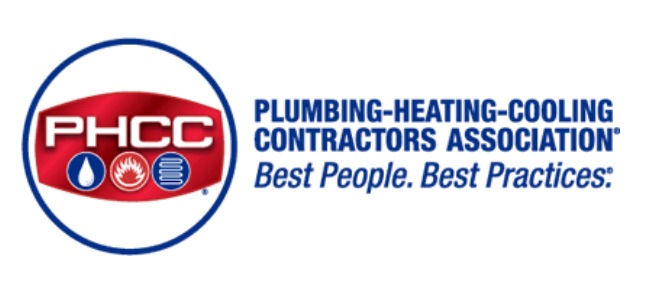Are Dehumidifiers Safe to Use Around Babies?
Having a baby is one of life’s greatest blessings. Unfortunately, having an infant at home can also be extremely nerve-wracking and cause huge amounts of anxiety. This is especially true if you’re a first-time parent. Keeping your baby safe and healthy is obviously a major concern since babies don’t yet have a fully developed immune system. A major factor in ensuring that your baby thrives in a healthy environment is controlling the humidity level in your home.
The Importance of Proper Humidity
High humidity provides the perfect environment for dust mites, bacteria, mold, and other fungi to thrive. This is an issue because all of these factors put babies at an increased risk of developing respiratory issues like bronchitis, asthma, rhinitis, etc. Respiratory illnesses are extremely dangerous for newborns and infants since they lack defenses against them. This is why experts recommend using a dehumidifier if your home has issues with high humidity. By controlling the humidity level, you can help keep your baby safe and healthy.
Portable or Whole-Home Dehumidifiers: Which Is the Better Choice?
Portable dehumidifiers aren’t necessarily a bad option, but they also aren’t all that effective for whole-home issues. The problem is that humidity levels may be very high. Portable dehumidifiers won’t be able to fully and effectively tackle the problem. This can be true even if you have a portable dehumidifier constantly running in every room.
Installing a whole-home dehumidifier is a much more effective solution for tackling systemic humidity issues and protecting your baby from respiratory illnesses. A whole-home dehumidifier is also more convenient. With portable dehumidifiers, you need to frequently empty the water reservoir for them to keep working. This isn’t the case with a whole-home dehumidifier. This type of unit is installed so that all of the water it draws out of the air drains into your plumbing system.
How Whole-Home Dehumidifiers Work
The reason that a whole-home dehumidifier can work so effectively is that it is installed as part of your central HVAC system. Your HVAC system constantly pulls air in and blows it back out into different rooms. Whole-home dehumidifiers are designed to be installed in the return air duct, where warm, moist air is drawn into the air conditioning system before returning to your living space.
The evaporator coil in an air conditioning system draws heat out of the air and cools it down. Cold refrigerant will flow through the evaporator coil. Then, the heat in the air will naturally flow through the unit and is captured by the refrigerant. The difference in temperature between the cold coil and the warmer air flowing over it also leads to some of the moisture in the air condensing on the coil. This condensation process is how air conditioning systems help to lower the humidity level in the air in addition to cooling it.
In a dry climate, air conditioning may be more than sufficient to manage a home’s humidity level and keep it from being too high on its own. However, this is rarely the case in more humid climates like Sterling. You’ll need an additional method of drawing moisture out of the air and dehumidifying it more.
A whole-home dehumidifier essentially works exactly like an AC evaporator coil. In fact, the dehumidifier has its own evaporator coil and uses cold refrigerant to cause moisture in the air to condense. When the AC is running, some of the warm, moist air being drawn into it flows into the dehumidifier before flowing into the air handler that houses the evaporator coil. Since the dehumidifier coil is much colder than the air flowing over it, lots of moisture condenses so that the air becomes much drier.
In addition to controlling moisture and keeping your baby healthy, a whole-home dehumidifier will also improve the effectiveness and energy efficiency of your AC system. There are two reasons for this. The first is that air conditioning works less effectively when the air coming into the system is very humid. The other reason is that the dehumidifier also draws heat out of the air flowing through it. This means that the air is slightly cooler when it flows over the evaporator coil. This makes the air conditioning more effective since it doesn’t have to cool the air quite as much.
How to Know if Dehumidification Is Necessary
The summers in Northern Virginia tend to be extremely hot and humid. As such, almost every house in our area could really benefit from whole-home dehumidification. This is especially true if there are infants in the home. Ideally, you want to ensure that the relative humidity level in your home constantly stays between 40% and 50%. Anything above 60% humidity is too high and can allow dust mites to thrive. This can potentially lead to issues with condensation and mold growth as well.
You can easily monitor or check the humidity level in your home by purchasing a portable hygrometer online or in a home improvement store. Many smart thermostats can measure humidity and allow you to check the current level using the thermostat app. If the hygrometer or thermostat shows that your home’s humidity level is between 50% and 55%, it’s definitely worth investing in a whole-home dehumidifier.
Other Solutions for Managing Your Home’s Humidity Level
While a whole-home dehumidifier will make a huge difference in how humid your home is, it’s also important to take additional steps to keep the humidity level lower for the safety of you and your children. One factor that can make a major difference in how humid your home gets is whether or not you run the exhaust fans in your bathroom and kitchen. Both cooking and bathing produce a large amount of heat and moisture. If you don’t frequently use these exhaust fans, your home will quickly get hot and humid. Cooking outside whenever possible will also keep your home cooler and drier. This can also make a big difference in terms of air quality. This is because cooking is a major contributor to indoor air pollution.
You should ensure that you always leave your AC on and all windows closed when the weather outside is warm. Many people prefer sleeping with their bedroom windows open whenever possible. The problem with this is that open windows allow a lot of moisture inside. This moisture then tends to accumulate in carpets, furniture, and even on walls. This makes it far more difficult for the AC system and dehumidifier to dry the air back out and reduce humidity. As such, the only time you really should open your windows is if the weather is somewhat cool and dry.
If you’re looking to upgrade your Sterling home with a whole-house dehumidifier, Meade’s Heating and Air is the HVAC company you can trust. We have years of experience installing and maintaining a full range of indoor air-quality equipment. Our team is also ready to take care of all of your heating and cooling needs, including installations, maintenance, and repairs.
For more information on the benefits of whole-home dehumidification or to schedule an indoor air quality consultation, contact Meade’s Heating and Air today.




